- Why is pruning important for gooseberries and redcurrants?
- Promotes Air Circulation and Sunlight Penetration
- Controls Plant Size
- Enhances Fruit Production
- Improves Overall Plant Health
- When is the best time to prune gooseberries and redcurrants?
- Pruning gooseberries:
- Pruning redcurrants:
- Tools and equipment needed for pruning
- Step-by-step guide to pruning gooseberries and redcurrants
- Step 1: Choose the right time
- Step 2: Gather the necessary tools
- Step 3: Remove diseased or damaged branches
- Step 4: Thin out crowded branches
- Step 5: Prune for shape and size
- Step 6: Prune to encourage fruiting
- Step 7: Clean up and maintain
- Common mistakes to avoid when pruning
- Benefits of proper pruning for optimal growth
- Question-answer:
- When is the best time to prune gooseberries and redcurrants?
- How much should I prune off the gooseberry and redcurrant branches?
- Do I need any specific tools for pruning gooseberries and redcurrants?
- Can I prune gooseberries and redcurrants during summer?
- What should I do with diseased branches?
- How often should I prune gooseberries and redcurrants?
- Can I reuse the pruned branches for anything?
- Video: How To: Prune blackcurrants
Pruning is a vital part of maintaining the health and productivity of your gooseberry and redcurrant shrubs. By trimming back branches in the correct manner, you can encourage optimal growth and ensure a bountiful harvest of delicious fruits. In this article, we will guide you through the process of pruning these fruit-bearing plants, offering tips and techniques to help you achieve the best possible results.
One important aspect of pruning is timing. It is best to prune gooseberries and redcurrants during their dormant period, which typically occurs in late winter or early spring. This is when the plants are not actively growing, making it easier to see the structure of the shrub and make informed decisions about which branches to remove. By pruning at the right time, you can stimulate new growth and promote the development of a well-shaped and productive plant.
When pruning, it’s crucial to remove any dead, damaged, or diseased branches. These can provide an entry point for pests and disease, potentially harming the entire shrub. Using sharp and clean tools, make cuts just above the bud or lateral branch, angling the cut away from the center of the plant. This will help to encourage outward growth and prevent crowding in the center of the shrub.
In addition to removing unhealthy branches, it is also important to thin out crowded areas. By selectively removing some of the older, weaker branches, you can create a more open structure that allows for increased light penetration and air circulation. This can help to prevent the development of fungal diseases and promote better fruiting. However, be careful not to remove too many branches, as this can result in excessive growth and an imbalance in the overall structure of the shrub.
By following these pruning techniques, you can ensure the long-term health and productivity of your gooseberry and redcurrant shrubs. Regular pruning will promote optimal growth, improve fruit quality, and make it easier to manage and care for your plants. So put on your gardening gloves, grab your pruning shears, and get ready to give your fruit-bearing shrubs the trim they deserve!
Why is pruning important for gooseberries and redcurrants?
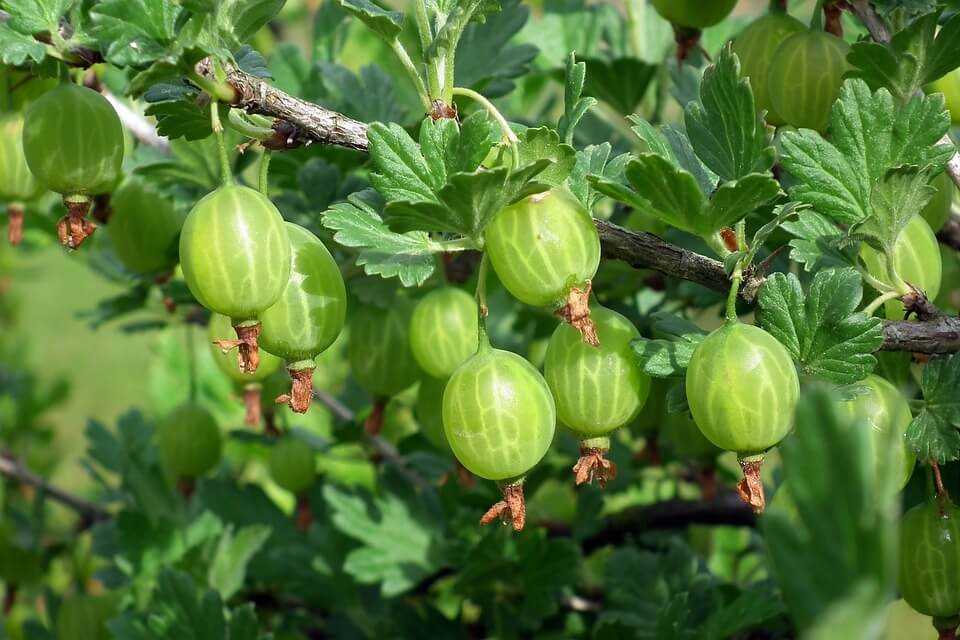
Pruning is an essential practice for maintaining the health and productivity of gooseberry and redcurrant plants. It involves the removal of selected branches and foliage to promote optimal growth, fruit production, and overall plant vigor.
Promotes Air Circulation and Sunlight Penetration
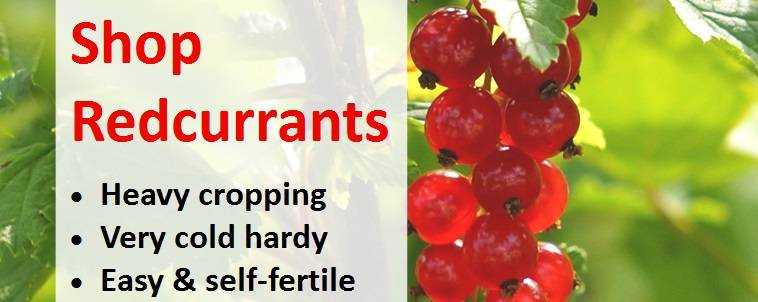
Pruning helps to improve air circulation within the plants by removing dense branches and foliage. Good air circulation reduces the risk of fungal diseases such as powdery mildew and botrytis, which can negatively impact the health of the plants and reduce fruit quality. Additionally, pruning allows sunlight to reach the inner parts of the plant, promoting photosynthesis and ensuring that all parts of the plant receive adequate light for optimal growth.
Controls Plant Size
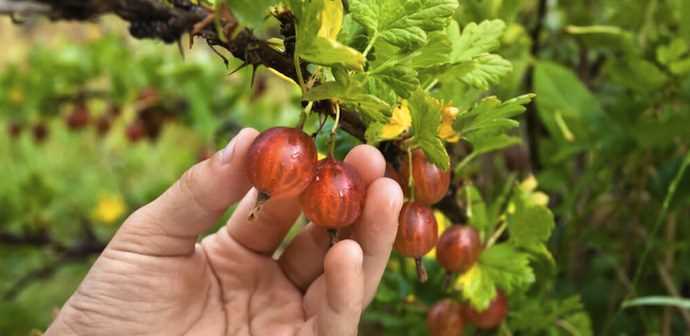
Regular pruning helps control the size of gooseberry and redcurrant plants, preventing them from becoming too large and unwieldy. By removing excess growth, pruning ensures that the plants remain compact and manageable, making it easier to care for and harvest the fruits. It also helps to prevent overcrowding, allowing each branch to have enough space to grow and bear fruit.
Enhances Fruit Production
Pruning is key to encouraging fruit production in gooseberry and redcurrant plants. By removing old and unproductive branches, pruning directs the plant’s energy towards new growth and the development of high-quality fruit. It also helps to stimulate the growth of lateral shoots, which are often the main areas where fruit production occurs. Pruning can also prevent the plants from becoming overly crowded, which can reduce the size and quality of the fruits.
Improves Overall Plant Health
Regular pruning promotes the overall health and vitality of gooseberry and redcurrant plants. By removing dead, diseased, or damaged branches, pruning prevents the spread of diseases and pests, ensuring that the plants remain healthy and productive. It also helps to stimulate new growth, which is usually healthier and more vigorous than older growth. Pruning also allows the gardener to inspect the plants more closely, making it easier to identify and address any issues that may be affecting their health.
When is the best time to prune gooseberries and redcurrants?
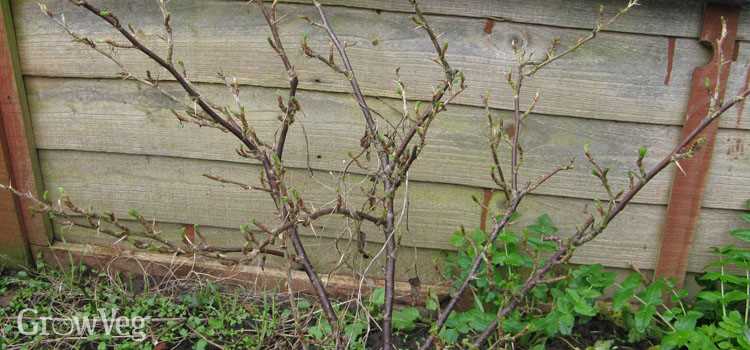
Pruning gooseberries and redcurrants is an essential task that helps maintain the health and productivity of these fruiting shrubs. The timing of pruning plays a crucial role in ensuring optimal growth and fruit production.
Pruning gooseberries:
The best time to prune gooseberries is during late winter or early spring, ideally before new growth begins. This is usually in February or March, depending on your local climate. Pruning during this dormant period allows the plant to easily recover from the pruning cuts and promotes vigorous regrowth.
To prune gooseberries, follow these steps:
- Start by removing any dead, damaged, or diseased branches. These can be recognized by their brown color, lack of foliage, or presence of visible signs of disease.
- Next, thin out the excessive growth by removing some of the older branches that are overcrowding the center of the shrub. These can be identified as branches that are crossing or rubbing against each other. Aim to maintain an open and airy structure.
- Lastly, prune the remaining branches to a desired length, typically around 30-45 cm (12-18 inches). Make the cuts just above an outward-facing bud or lateral branch.
Pruning redcurrants:
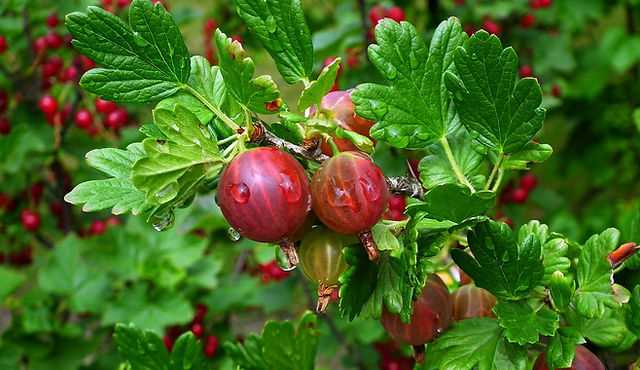
The best time to prune redcurrants is also during late winter or early spring, similar to gooseberries. Prune before new growth starts, typically in February or March.
Follow these steps to prune redcurrant bushes:
- Begin by removing any dead, damaged, or diseased branches. These should be cut back to the base or to a healthy lateral branch.
- Next, thin out any crowded or crossing branches to maintain an open and well-spaced structure.
- Finally, prune the remaining branches to a desired length, usually around 30-45 cm (12-18 inches). Make the cuts just above an outward-facing bud or lateral branch.
Remember to always use clean and sharp pruning tools to make clean cuts and minimize the risk of disease transmission. Regular pruning, done annually, will help keep your gooseberries and redcurrants healthy and productive.
Tools and equipment needed for pruning
- Pruning shears: These are essential for cutting branches up to 1/2 inch in diameter. Choose a pair with sharp, clean blades that can easily slice through the branches.
- Loppers: Loppers are designed for cutting branches with a diameter of 1/2 to 2 inches. They have longer handles and a fulcrum mechanism that provides extra leverage for efficient cutting.
- Hand saw: A hand saw is necessary for cutting larger branches that cannot be easily cut with pruning shears or loppers. Look for a saw with a sharp, curved blade that can easily slice through branches.
- Gloves: It’s important to protect your hands while pruning to prevent any injuries. Wear a pair of sturdy gardening gloves to protect your hands from thorns and sharp edges.
- Eye protection: When using pruning tools, there is a chance that small debris or twigs may fly into your eyes. Make sure to wear safety glasses or goggles to protect your eyes.
- Clean cloth or towel: Keep a clean cloth or towel handy to wipe down your tools after each use. This will help prevent the spread of diseases between plants.
These are the basic tools and equipment you will need for pruning gooseberries and redcurrants. It’s important to have sharp and clean tools to ensure clean cuts and minimize damage to the plants. Always clean and sanitize your tools before and after pruning to prevent the spread of diseases. Now that you have the necessary tools, you can proceed with the pruning process for optimal growth of your gooseberries and redcurrants.
Step-by-step guide to pruning gooseberries and redcurrants
Proper pruning is essential for promoting optimal growth and fruit production in gooseberries and redcurrants. Follow these step-by-step instructions to learn how to properly prune these fruit-bearing shrubs.
Step 1: Choose the right time
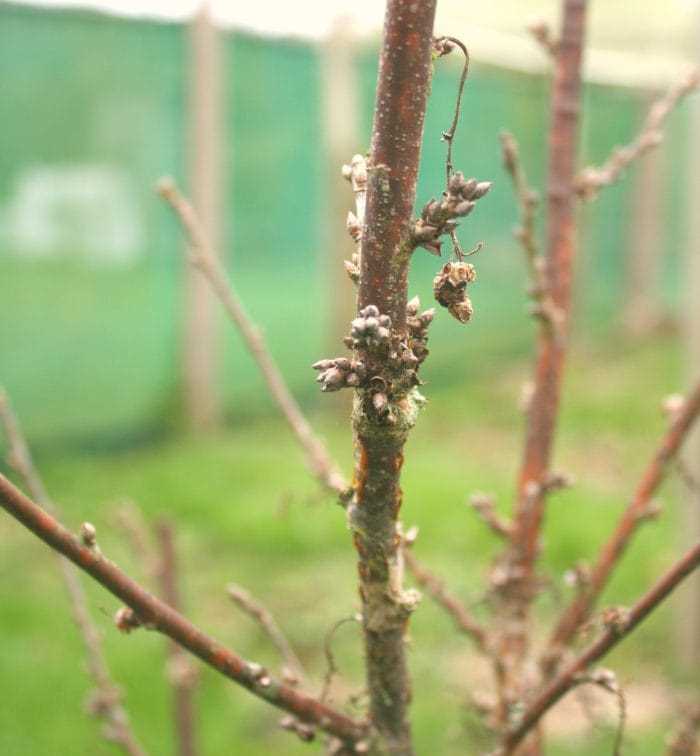
Pruning should be done during the dormant season, which is typically late winter or early spring. This allows the plants to recover and regrow before the growing season begins.
Step 2: Gather the necessary tools
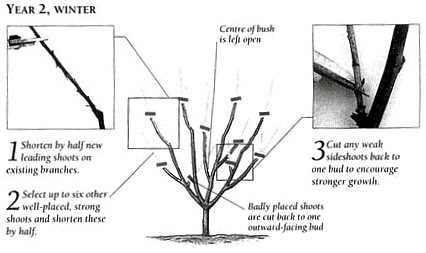
Before starting the pruning process, make sure you have the proper tools on hand. You will need a pair of sharp bypass pruners, loppers for thicker branches, and gardening gloves to protect your hands.
Step 3: Remove diseased or damaged branches
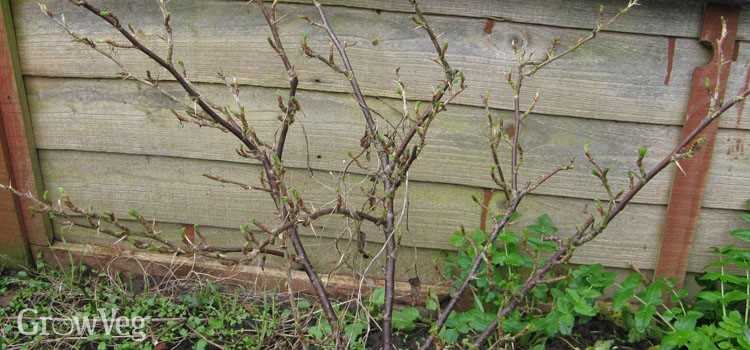
The first step in pruning is to remove any diseased or damaged branches. Look for branches that are broken, dead, or showing signs of disease, such as discoloration or lesions. Use the pruning shears or loppers to make clean cuts just above a healthy bud or branch junction.
Step 4: Thin out crowded branches
Next, thin out any branches that are crossing or overcrowded. This will improve air circulation and light penetration throughout the plant, reducing the risk of disease and promoting better fruiting. Select the weakest branches and remove them at the base or where they meet a larger branch.
Step 5: Prune for shape and size
To maintain an open and balanced shape, selectively prune the remaining branches. Remove any branches that are growing inward towards the center of the plant. Also, trim back long, leggy branches to encourage bushier growth. Aim for an overall shape that allows sunlight to reach all parts of the plant.
Step 6: Prune to encourage fruiting
Lastly, prune to encourage fruiting. Gooseberries and redcurrants produce fruit on older wood, so it’s important to retain some of the previous year’s growth. Cut back one-third of the oldest wood each year to stimulate new growth and maximize fruit production.
Step 7: Clean up and maintain
After pruning, clean up any debris and fallen leaves around the base of the plant. This helps prevent the spread of disease and pests. Throughout the year, monitor the plants for any new growth that may need pruning to maintain their shape and health.
Following these step-by-step instructions will ensure that your gooseberries and redcurrants thrive and produce an abundance of delicious fruits. Happy pruning!
Common mistakes to avoid when pruning
- Pruning at the wrong time: One common mistake that gardeners make is pruning their gooseberries and redcurrants at the wrong time of year. It is important to prune these plants in late winter or early spring, before new growth begins. Pruning at other times can result in stunted growth or damage to the plant.
- Removing too much foliage: Another mistake to avoid is removing too much foliage during pruning. While it is important to thin out the branches and remove any dead or diseased wood, it is also important to leave enough foliage for the plant to photosynthesize and produce energy. Be mindful of how much foliage is being removed and try to maintain a proper balance.
- Not sterilizing pruning tools: Many gardeners forget to sterilize their pruning tools before using them on their gooseberries and redcurrants. Failure to do so can lead to the spread of disease and infections. It is important to clean and sterilize the tools with a disinfectant or rubbing alcohol before and after each use.
- Pruning too early: Pruning too early in the winter can expose the plants to frost damage. It is best to wait until the worst of the winter weather has passed before pruning your gooseberries and redcurrants. This will help protect the plants and ensure healthy regrowth in the spring.
- Not pruning for airflow: Proper airflow is important for the health of gooseberry and redcurrant plants. Neglecting to prune for airflow can result in increased moisture levels, which can lead to diseases such as powdery mildew. Prune out any crowded or crossing branches to create open spaces for airflow.
- Overlooking young shoots: It is important to pay attention to the growth of young shoots and prune them accordingly. Neglecting to prune young shoots can lead to overcrowding and reduced fruit production. Be sure to remove any unwanted or poorly placed shoots to encourage better fruiting.
- Not properly disposing of pruned material: After pruning, it is important to properly dispose of the pruned material. Do not leave it on the ground near the plants, as it can attract pests and diseases. Instead, collect the pruned material and dispose of it in a compost bin or green waste bin.
Avoiding these common mistakes will help ensure that your gooseberries and redcurrants grow optimally and produce a bountiful harvest. Take the time to prune properly and enjoy the benefits of healthy, productive plants.
Benefits of proper pruning for optimal growth
Promotes airflow and sunlight penetration: Pruning helps create a well-ventilated and open structure for the gooseberry and redcurrant plants. This allows for better airflow, which reduces the risk of diseases caused by high humidity. Moreover, proper pruning ensures that sunlight can penetrate all parts of the plant, promoting overall growth and fruit production.
Encourages fruit production: Pruning helps stimulate the production of fruits by redirecting the plant’s energy towards fruit-bearing branches. By removing excess and unproductive growth, the plant can focus its resources on developing healthy and robust fruits.
Controls plant size and shape: Regular pruning allows you to control the size and shape of your gooseberry and redcurrant plants. This can be particularly important if you have limited space in your garden or if you want to create a specific aesthetic. By selectively removing branches, you can maintain a compact and tidy plant that fits your desired space and style.
Enhances plant health: Pruning helps improve the overall health of your gooseberry and redcurrant plants. By removing dead, diseased, and damaged branches, you can prevent the spread of diseases and pests. Additionally, proper pruning allows for better air circulation and sunlight exposure, which reduces the risk of fungal infections and promotes plant vigor.
Renews older plants: Regular pruning can revitalize older gooseberry and redcurrant plants. By removing old and unproductive wood, you encourage the growth of new, vigorous shoots. This helps rejuvenate the plant, leading to increased fruit production and healthier overall growth.
Question-answer:
When is the best time to prune gooseberries and redcurrants?
The best time to prune gooseberries and redcurrants is during the late winter or early spring, while the plants are still dormant.
How much should I prune off the gooseberry and redcurrant branches?
When pruning, you should aim to remove about a third of the older branches, as this will encourage new growth and improve air circulation.
Do I need any specific tools for pruning gooseberries and redcurrants?
Yes, for pruning gooseberries and redcurrants, it is recommended to use sharp and clean secateurs. This will ensure clean cuts and minimize the risk of disease transmission.
Can I prune gooseberries and redcurrants during summer?
It is not recommended to prune gooseberries and redcurrants during the summer, as this can stimulate new growth that may be susceptible to damage from extreme heat or cold.
What should I do with diseased branches?
If you notice any diseased branches while pruning, it is important to remove them completely from the plant. This will help prevent the spread of disease to healthy parts of the plant.
How often should I prune gooseberries and redcurrants?
Gooseberries and redcurrants should be pruned every year to maintain their shape and encourage optimal growth. Annual pruning also helps to remove dead or diseased wood.
Can I reuse the pruned branches for anything?
Yes, you can use the pruned branches for making wreaths or as stakes for supporting other plants in your garden.







